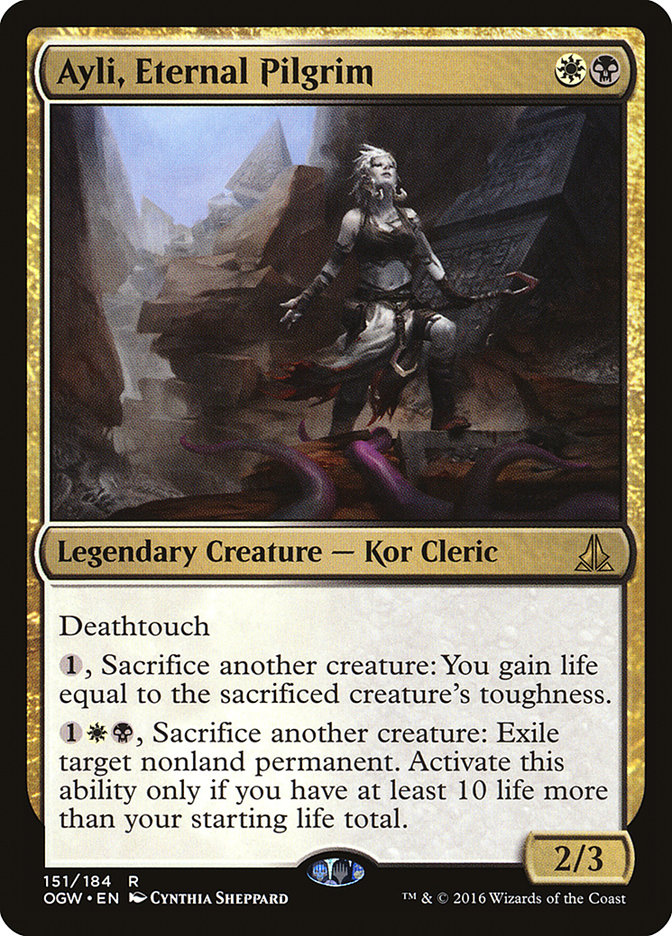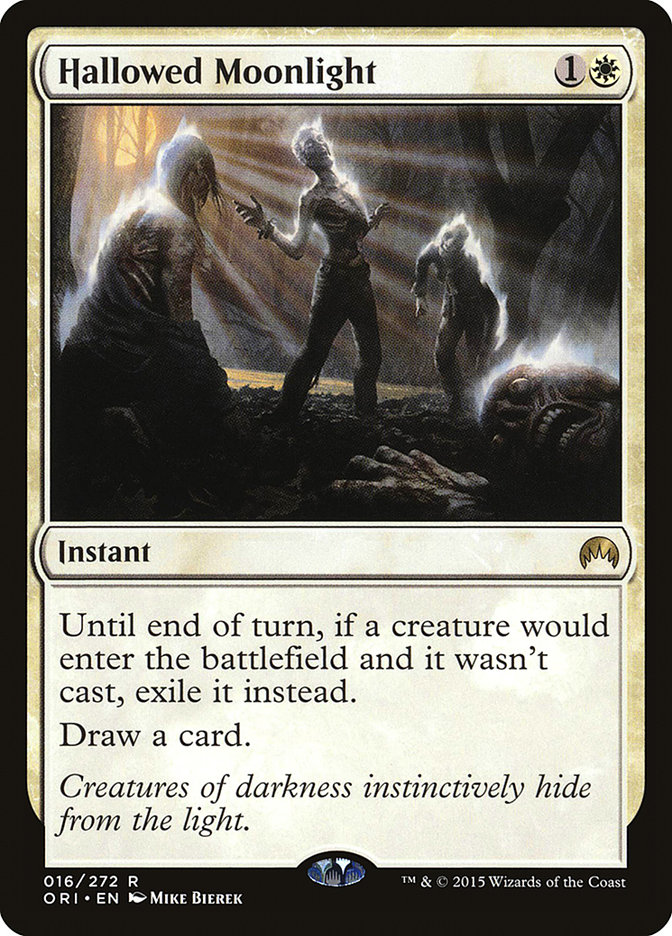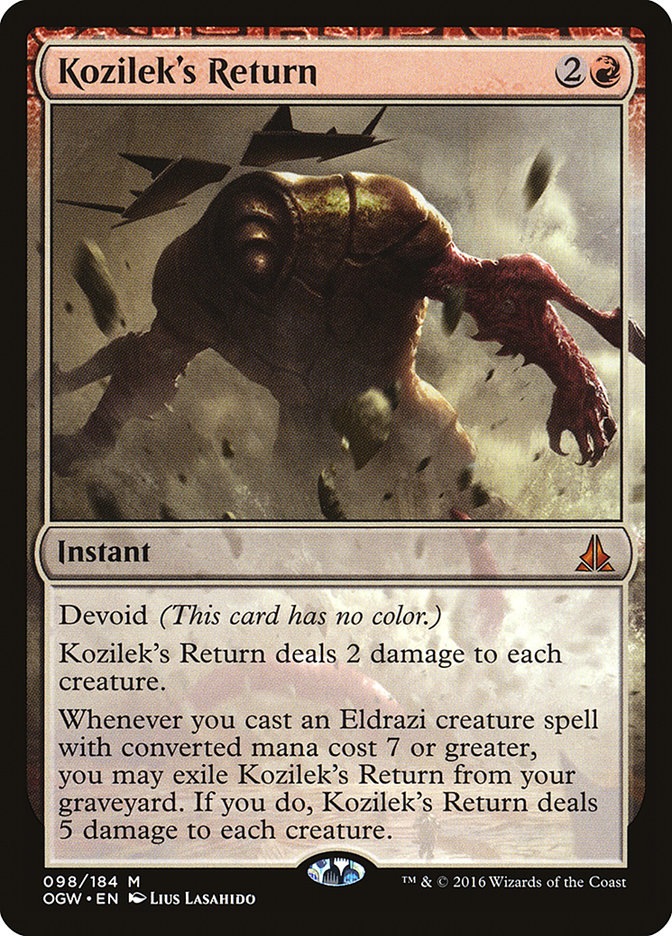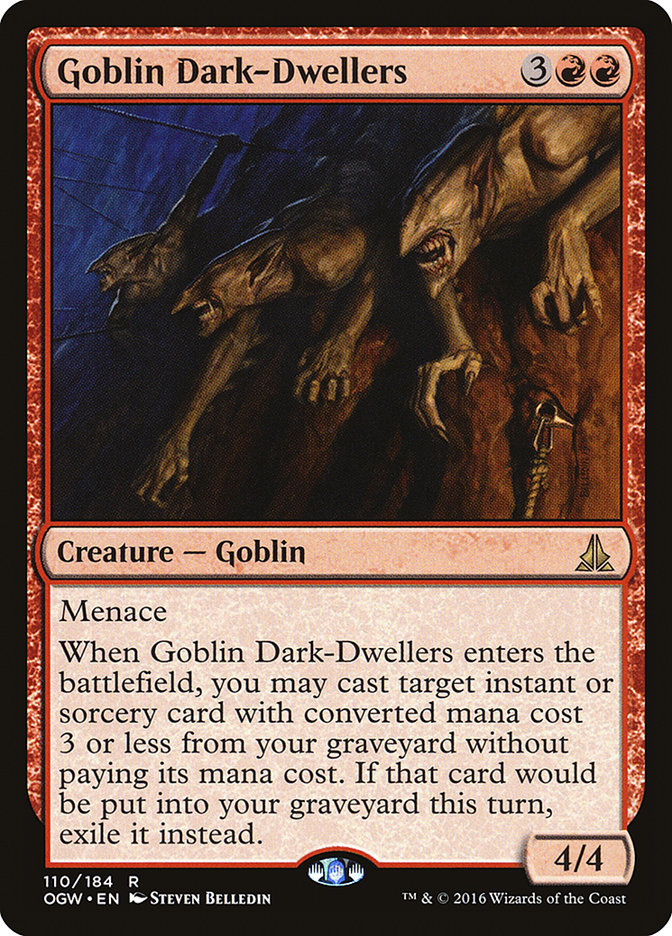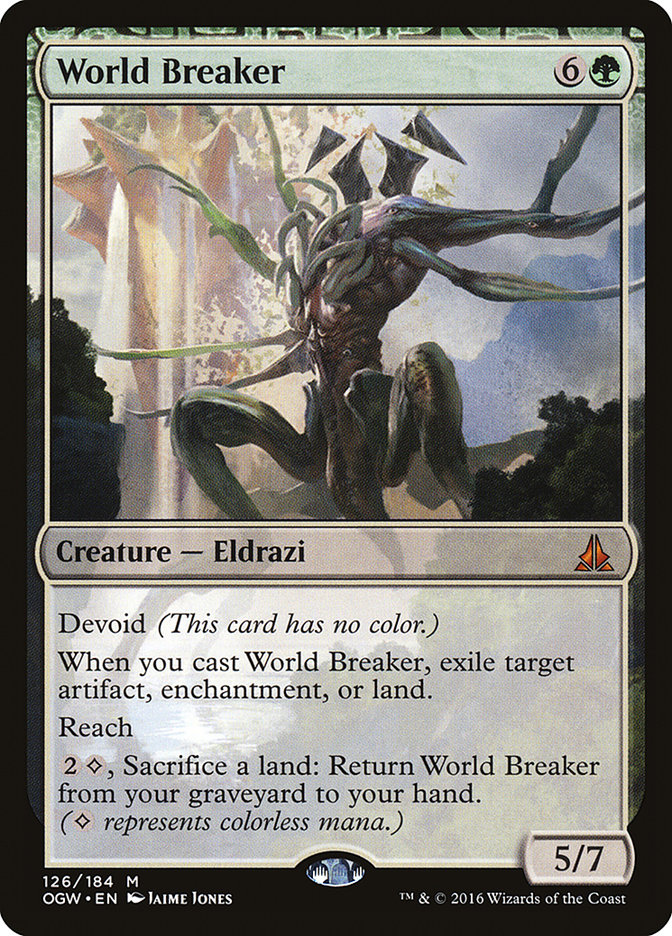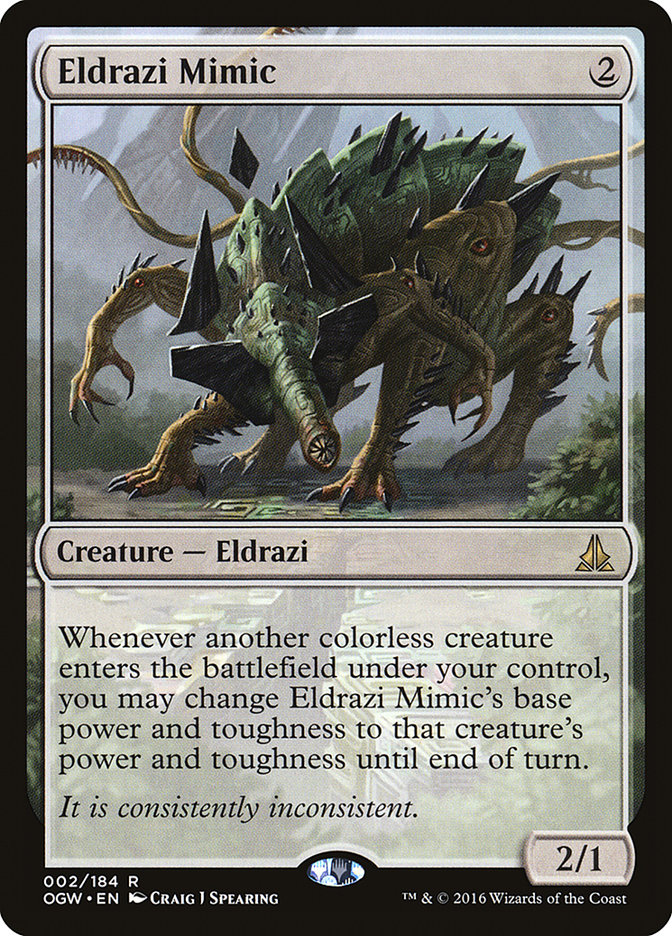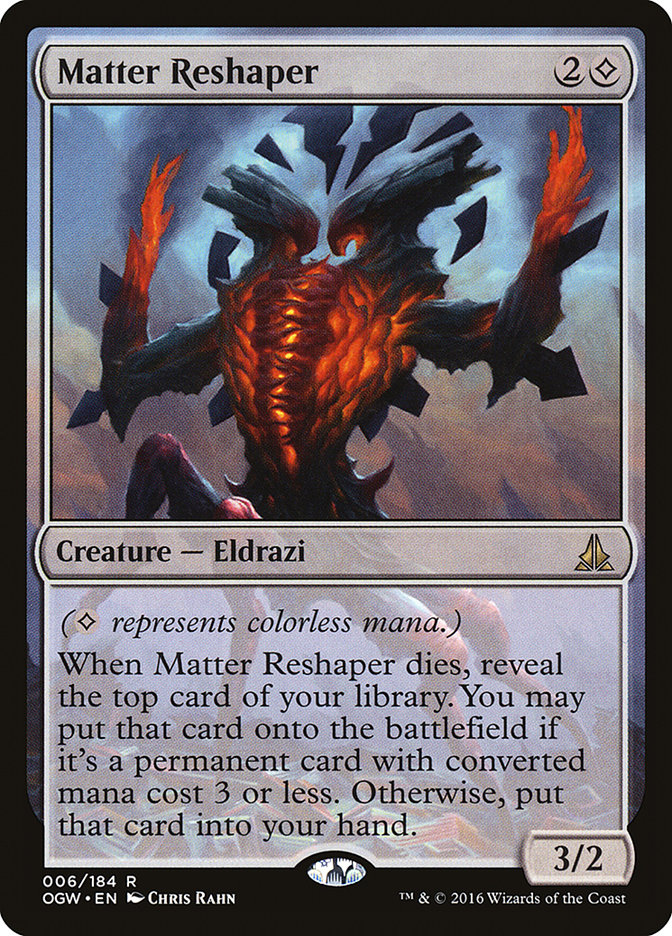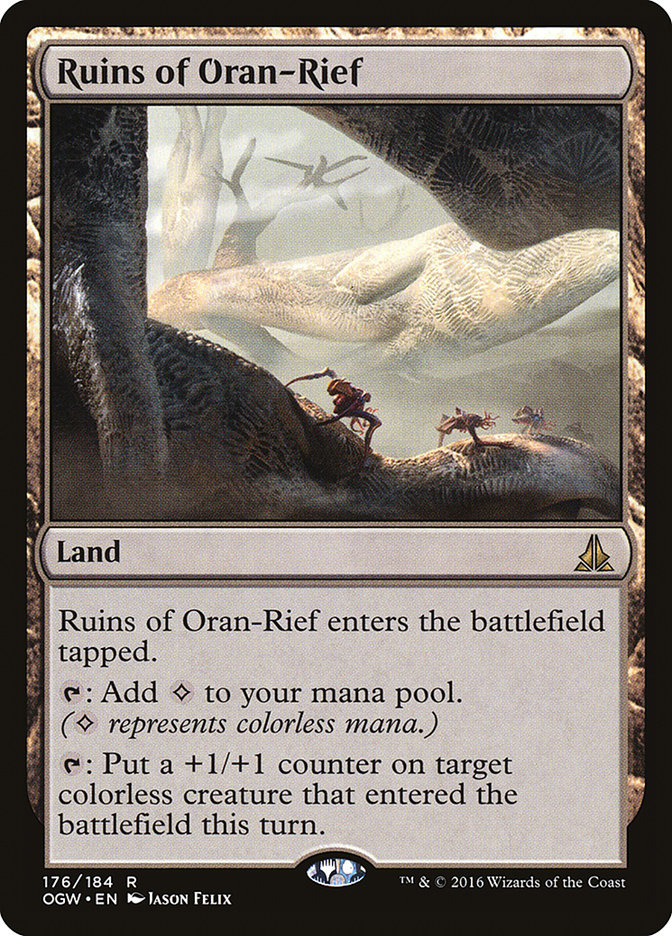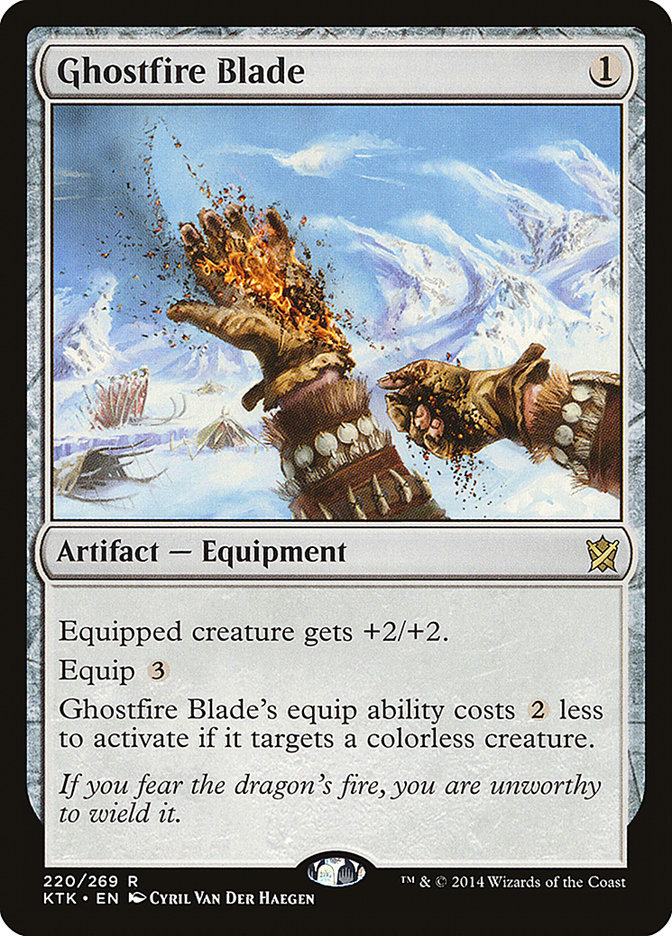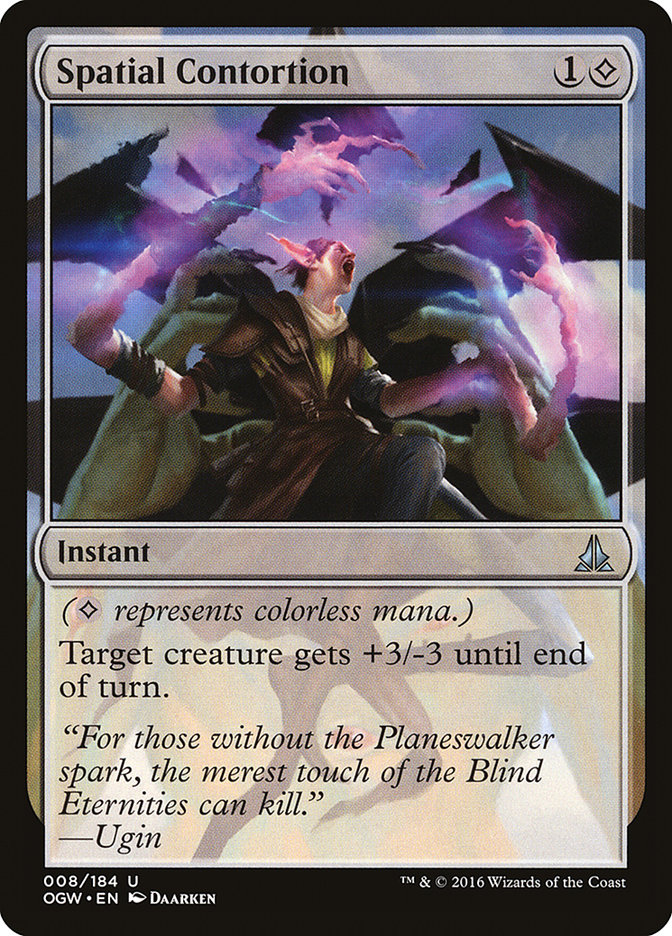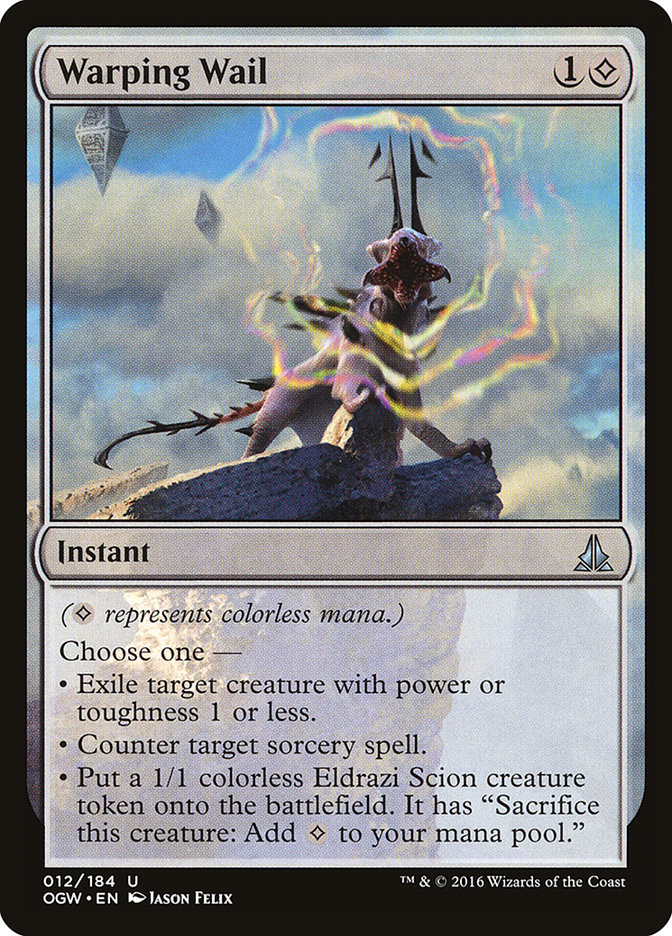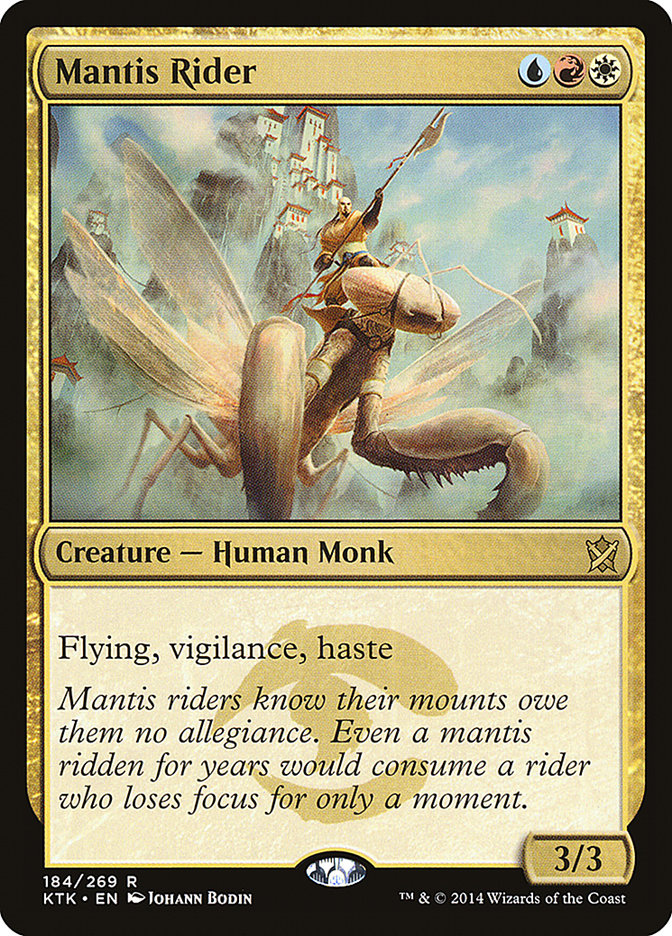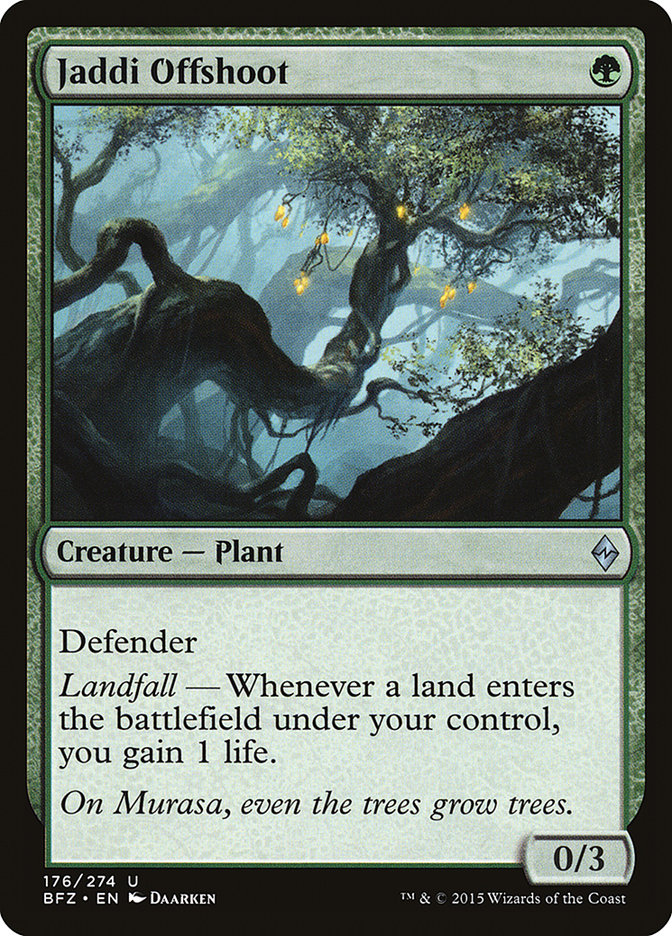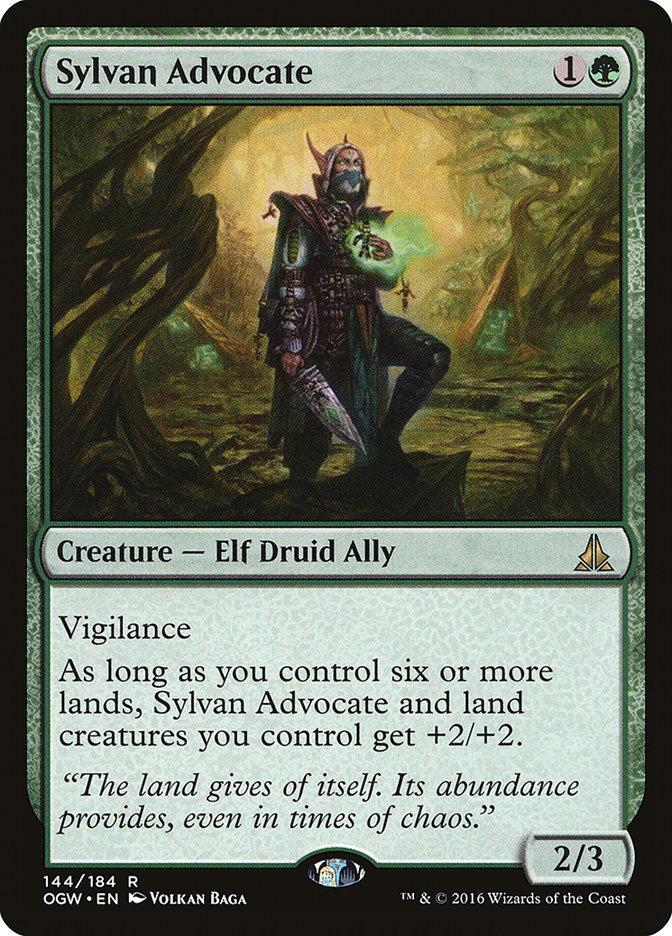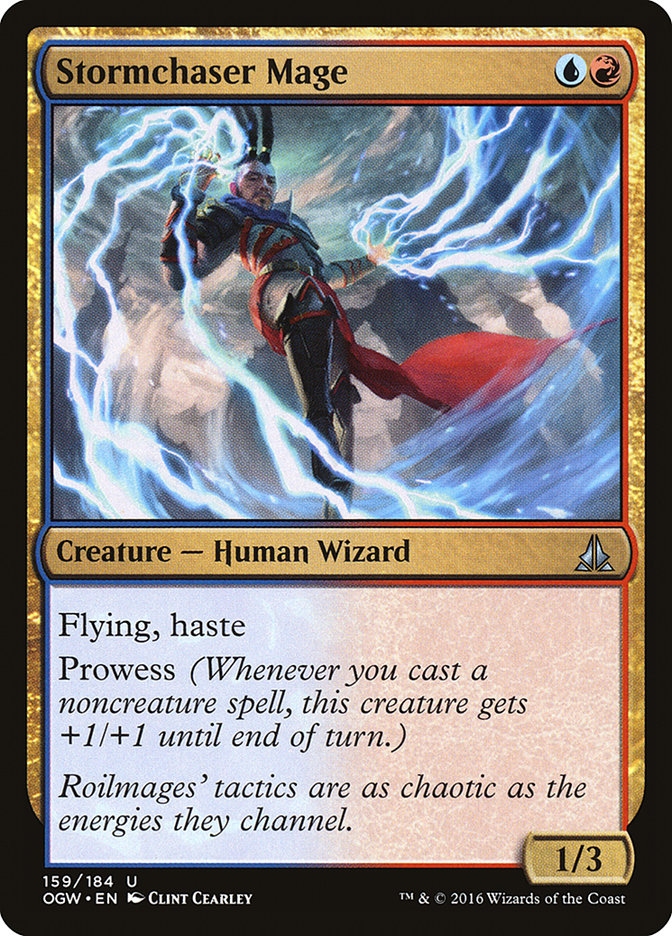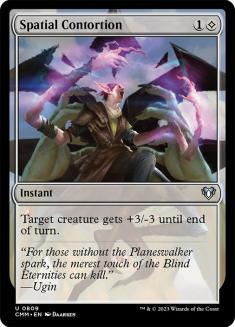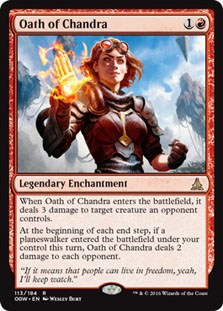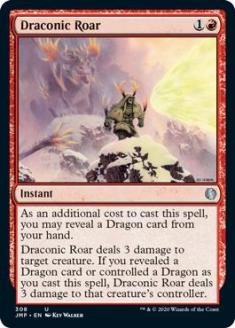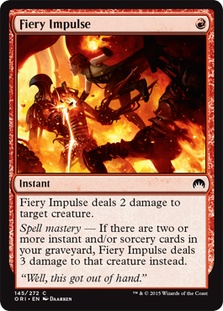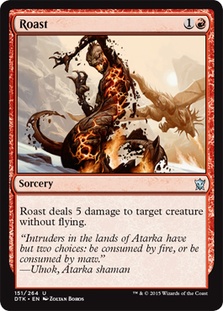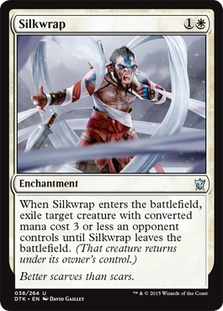#SCGATL this weekend is the first Standard tournament with Oath of the Gatewatch. By now I’m sure everyone has scoured the spoiler, brewed a few decks, and maybe even gotten some cards from their local Prerelease or by trading with those who did.
I’ve always been a big fan of fresh, new formats. The brews come out of the woodwork and fight against tried-and-true decks that have rolled over from last season. The first week is tough as the metagame is unexplored and everyone is doing their best to make guesses in the dark. New cards and new interactions will come up that you aren’t familiar with. Today I’ll share a bit of advice for those going to #SCGATL based on the playtesting I’ve done at my kitchen table with fellow Roanoke gamers like Brad Nelson and Todd Anderson.
Don’t Fold to Rally
The Four-Color Rally the Ancestors deck was (in my opinion) the best deck at the end of the previous Standard season. It doesn’t look like things will change much either moving forward. There isn’t anything new that interacts with graveyards outside of Kalitas, Traitor of Ghet, and still that card is kind of expensive, narrow, and takes the four-drop slot from things like Gideon, Ally of Zendikar; Siege Rhino; or Thought-Knot Seer depending on your other colors.
Be aware of the new tools that Rally gets:
Ayli, Eternal Pilgrim is a sacrifice outlet that is very tough for aggressive decks to push through. Ayli trades up with every creature in the format and often the creature decks will have to do work to get her off the battlefield in combat. The only card that trades efficiently with Ayli is Fiery Impulse. Along with Reflector Mage being a 2/3 as wel,l the red decks can’t bank on Wild Slash to remove much from the Rally deck.
Reflector Mage means that Anafenza, the Foremost and Kalitas, Traitor of Ghet will be easier to beat. This means that more sideboard slots need to be dedicated to fighting Rally in order to overwhelm them.
Hallowed Moonlight is the cleanest answer. Still, a smart Rally player will force you to progress your board enough where you can’t leave up 1W or extend the game long enough to find a Dispel to protect it. Or maybe that was just Michael Majors outplaying me over and over.
Your own Dispels help post-sideboard. The Rally decks tend to water down the creature suite somewhat and bring in more spells like Murderous Cut and Dispel in order to play a less blunt and more surgical game post-sideboard. For those playing without white, black, or blue, I recommend Cranial Archive as a means to disrupt their graveyard shenanigans.
Kozilek’s Return
The new version of Pyroclasm brings a sweeper to the big Eldrazi decks that punishes small creature strategies. While being a home run hit in Eldrazi Ramp, Kozilek’s Return is strong enough to be played in other decks like Jeskai Black since it’s an instant. Volcanic Fallout saw a lot of play, and while not a carbon copy of Kozilek’s Return, it serves the same purpose: the ability to leave up mana and be reactive on the opponent’s turn. It’s also a nice new target for Goblin Dark-Dwellers.
If you plan on playing a creature deck, you need enough three-toughness creatures to not make Kozilek’s Return a complete blowout. This means that if you’re playing Atarka Red, you might want to consider Thopter Engineer over Hordeling Outburst. It means you might want to attack with Gideon, Ally of Zendikar or make an emblem over another 2/2 Knight Ally. It means you might want to make Warden of the First Tree a 3/3 creature over making a more efficient play that puts more creatures onto the battlefield. It means Mantis Rider is probably good again in Jeskai.
Let’s take a close look at the wording of Kozilek’s Return’s second ability.
Whenever you cast an Eldrazi creature spell with converted mana cost 7 or greater, you may exile Kozilek’s Return from your graveyard. If you do, Kozilek’s Return deals 5 damage to each creature.
Kozilek’s Return is an “on cast” trigger. For example, if World Breaker is cast when Kozilek’s Return is in the graveyard of the Eldrazi player, the trigger will resolve before World Breaker enters the battlefield. World Breaker will enter the battlefield after Kozilek’s Return does 5 damage and the 5/7 won’t die to a Fiery Impulse, Wild Slash, two damage from Kolaghan’s Command, or your own Kozilek’s Return.
It’s also a “may” to exile the Kozilek’s Return or not. So if you’re staring down a possible returned Kozilek’s Return and cast a Become Immense on your creature to save it, the Eldrazi player may choose to not exile the Kozilek’s Return, leaving it in the graveyard for a better time.
Kozilek’s Return is an ability on the card, not an actual spell itself. This means the effect cannot be countered as if it were a spell, like with Scatter to the Winds. It’s also not an “instant or sorcery spell”, even though it’s an Instant card. This means Dromoka’s Command won’t be able to prevent the damage. Kozilek’s Return is a messed up Magic card.
Small Eldrazi Decks
With Eldrazi Mimic, Matter Reshaper, Thought-Knot Seer, and Reality Smasher coming in as colorless creatures, there are bound to be many versions of small Eldrazi decks ranging from “mono-colored” to upwards of three “real” colors plus colorless.
The trickiest of these cards is Eldrazi Mimic interacting with +1/+1 counters. These will likely come from Ruins of Oran-Rief. Here’s a situation that may arise that you should be aware of that the deck can do:
Turn 1: Play Ruins of Oran-Rief.
Turn 2: Play Swamp, cast a Ghostfire Blade.
Turn 3: Play Swamp, cast Eldrazi Mimic. Put a +1/+1 counter on it with Ruins of Oran-Rief.
Turn 4: Play Swamp, equip Ghostfire Blade.
Turn 5: Play Blighted Fen, cast Thought-Knot Seer.
Thought-Knot Seer and Eldrazi Mimic’s triggers are both on the stack. Activate Ruins of Oran-Rief to make Thought-Knot Seer a 5/5. Eldrazi Mimic’s base power and toughness becomes 5/5. With its own +1/+1 counter and the Ghostfire Blade it’s now an 8/8.
Other notable things are:
Matter Reshaper may put a three-casting cost or less permanent into its owner’s hand instead of the battlefield. This comes up with Hangarback Walker, so as not to make it enter the battlefield as a 0/0.
Reality Smasher will counter an opponent’s spell that targets it if that player has no more cards left in hand. Cards that can’t be countered, you won’t have to discard a card at all to. Considering the cards in Standard that have that text are Exquisite Firecraft, Rending Volley, and Tears of Valakut, I imagine that won’t come up much unless Reality Smasher shrinks in size or already takes damage, turns blue or white, or gains flying.
Warping Wail and Spatial Contortion can team up to kill a four-toughness creature.
Also read closely whether an Eldrazi’s ability triggers on cast or entering the battlefield. In general, the bigger the Eldrazi, the more likely it is to have an on-cast trigger, but this is not always the case.
Hangarback Walker Is Probably Good Again
Abzan is probably still really good and will show up in decent numbers, but I predict many Abzan players are sick of their boring old deck and want to try something new with Oath of the Gatewatch. Anafenza, the Foremost and Silkwrap will be in fewer numbers than normal, even though both are good against Rally the Ancestors. Hangarback Walker is great against various aggressive strategies while also being decent against Kozilek’s Return and Ugin, the Spirit Dragon.
The Rally the Ancestor decks have slowly been slipping in more and more copies of Fleshbag Marauder and Merciless Executioner, and Hangarback Walker loves to see those.
Going into #SCGATL, I like Hangarback Walker as a two-drop over riskier but potentially higher-payoff creatures like Snapping Gnarlid, Heir of the Wilds, or Seeker of the Way unless you have a very good reason. You won’t really know what the most efficient thing is and Hangarback Walker tends to make efficient use of your mana every turn.
Be Proactive
The general rule of a new format is that there are too many unanswered questions to try to “solve the format”. People can come with anything. It’s the wild west. Your best bet is to build something has a strong proactive gameplan.
If you play too many versatile spells like Utter End, you risk losing to aggro. If you have too many small sweepers, you lose to control. The right balance is unknown when the metagame is unestablished, so I tend to stray away from trying to guess right and instead simply bring a deck that has a clear plan of its own that it wants to execute.
A prime example of a reactive deck is Jeskai Black.
Don’t Play Jeskai Black
At least not in its former configuration. Jeskai Black is an example of a deck that’s very reactive and plays removal spells that need to line up well to function. Also with Kozilek’s Return being a card now, its base of two-toughness creatures is going to have a tough time in this new world.
Goblin Dark-Dwellers could add extra power to Jeskai Black (or Mardu) but still requires you loading your deck full of reactive spells, slowing your deck down, and exposing you to hyper-aggression and heavier control at the same time. Jeskai Black is a good archetype, but I’d shelve it for this week until the format fleshes out.
Play Cards That Kill Three-Toughness Creatures
Again, this is a response to Kozilek’s Return and the expected adjustment in future creature suites. Mantis Rider is due for a comeback and the Ramp decks will play three-toughness creatures, either Jaddi Offshoot or Sylvan Advocate.
The Four-Color Rally decks have a lot of three-toughness creatures in them now as well. Ayli, Eternal Pilgrim is annoying to get through in combat and Reflector Mage and Catacomb Sifter show up as well.
Stormchaser Mage will be a tough creature to take down if they leave up mana. Other prowess creatures like Seeker of the Way, Monastery Swiftspear, and Monastery Mentor can be saved from only two damage with a single instant.
These are the cards to look at playing.
Be Afraid of “The Combo”
Expedite, Slip Through Space, and Stormchaser Mage bring new possibilities for the prowess + pump + Temur Battle Rage combo. If you see a red prowess creature of any kind, immediately do the math on how much exposure you want to dying on the spot if you tap out.
Even an untapped Swamp and four cards in the graveyard will give the combo player pause while they consider going for it into a Murderous Cut. Leaving up a blue mana, even without Dispel, can provide a similar reconsideration. What you don’t want to do is bank on a small creature chump blocking to save you from dying.
Have A Few Ways to Kill Jace, Vryn’s Prodigy
Yeah, Jace. It’s probably still the best card in Standard and will continue to be so. Again, don’t go overboard in the reactive card department, but don’t leave yourself way behind to an active Jace, either. This means play maindeck Kozilek’s Return in Ramp and fit in some number of Spatial Contortion or Warping Wail in your small Eldrazi deck.
What I Expect To Face at #SCGATL
15% Green-Red Ramp
15% Four-Color Rally
15% Abzan/Abzan Blue
10% Atarka Red
10% Jeskai/Jeskai Black
5% Prowess Variants
5% Small Eldrazi Variants
5% Esper Control/Dragons
5% White-Black/Esper Tokens
5% Mardu/Mardu Green
10% Miscellaneous
I’ve rounded all of the numbers to fives for simplicity’s sake. I certainly could be off on the numbers or missing an archetype or two, but roughly these are the numbers my gut is saying to expect.
Best of luck at #SCGATL!



